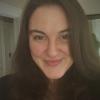Bad Rules and Few Options

This was an, uh, interesting play to go to with my divorced partner and my just-shy-of-one-year divorced self. You have been warned. Henrik Ibsen’s original A Doll’s House debuted in 1879. Revolutionary for the time, married Nora Helmer leaves her husband, Torvald, and their young children when it becomes clear that Torvald has no true respect for her and their marriage (and potentially all marriages?) is a sham. Written in 2017 by Lucas Hnath, A Doll’s House, Part 2, takes place 15 years after Nora Helmer famously walked out her front door. With fully formed and quite contemporary views on marriage, monogamy, and autonomy, Part 2 does not pretend to know exactly what happened to these well-known, much-debated characters. Instead, Part 2 grapples with one potential timeline to show what these characters and their stories might have to say to modern audiences. This is quite the challenge and I am not sure if the book is entirely successful. The Jungle Theater’s production, however, resplendent with nuanced performances, certainly does a wonderful job of providing depth, humor, charity, and humanity to these much-discussed characters. Under the direction of Joanie Schultz, Part 2 will make you want to break out all your feminist texts, wonder if it is possible to have a room of your own, and contemplate the role of marriage in our modern society.
Nora comes home when she finds out Torvald has not formally divorced her, knocking on the same door she left through. This has caused trouble for her new life as a writer, where she presents herself as a divorced woman and had entered into contracts on her own behalf (such dealings would be illegal given the rules about married women, contracts, and money at that time). Chelsea M. Warren’s pointed set creates a cavernous, hall of mirrors effect. Many concentric rectangles lead to the all-important door, giving the entryway/drawing room an expectant, unstable feeling. Nothing exists in the rooms except chairs, more evidence that Torvald was unable or unwilling to replace Nora.
Christina Baldwin as Nora gives the audience no outs, which is entirely appropriate. Central to Hnath’s play is a refusal to make Nora for anyone other than Nora. This is hard, even for a modern audience, because we still expect women to conform to and be for others instead of for themselves. (Nora’s original refusal still baffles us, which I suspect is why Ibsen’s story continues to resonate.) Hnath’s Nora has not been humbled (the way I believe most of us expected); she stands behind her fundamental mistrust of marriage and the feeling that women are constantly subordinated to men by political, cultural, and religious rules. Mathew J. Lefebvre’s design for Nora is perfect—clad in a devastatingly structured, purple Victorian dress with teal bodice, her dress has extravagantly deep pockets and makes her stand out amidst the bleak backdrop of the home. While so many of the characters in Part 2 have changed, Nora’s experiences have only heightened her verve. This makes playing her a challenge and I applaud Baldwin for coming to Nora on Nora’s terms, with a kind of deep embodiment and without apology. Nora may be sad about some of her choices, but not enough to not have made them; Baldwin’s performance makes this distinction so clear and so sharply, it is likely to cut the audience.
However, when shown next to the other characters, it can feel a bit like Nora hasn’t grown as much in the past 15 years; she comes home not on her own terms, but once again because she needs something from those she has distanced herself from. Torvald (Steven Epp), daughter Emmy (Megan Burns), and housekeeper/nanny Anne Marie (Angela Timberman) have had to reconcile themselves to Nora’s absence. This profound absence, in the manner of real life, manages to be both worse and easier to bear than Nora expected. Epp’s Torvald feels broken but functioning. I particularly liked a wonderful bit of staging when Nora pleads to sit together and talk and instead he removes himself from her; sitting upstage, not facing her, is the only way he can talk to her. Both the book and Epp make Torvald much more relatable and contrite in Part 2 while managing to stay true to Ibsen’s original characterization.
Another character that gets more time is housekeeper and nanny Anne Marie (Angela Timberman). Timberman’s performance is funny, sensitive, and she really sells her anachronistic swears. Annie Marie doesn’t have quite as much to do as the rest of the characters, but her economic reliance on the Helmers is explicitly discussed, and her situation’s similarity to Nora’s are no longer subtext. Like so many well-off women, Nora has been able to pass some of her socially required duties to a lesser paid woman.
Megan Burns as Emmy is an unqualified delight. Both the audience and Nora expect to find Emmy more anxious about their reunion, but Emmy remains dry-eyed and rational; she knows Nora would only be there if Nora wanted something. Emmy delivers the only competent pro-marriage speech of the piece, counterbalancing Nora’s autonomous, individualistic invectives with one that acknowledges the importance of mutual need and shared strength. Of course, like so many things in this play, Emmy herself is quite autonomous, and her pronouncements on the importance of family do not perfectly line up with her demeanor or choices.
A Doll’s House, Part 2 asks more questions than it answers and complicates characters we thought we knew well. While heavily dependent on the relationships and buy-in established by Ibsen’s original, this cast has made its mark on this production. If you are thinking about getting married, it’s hard to say if this play will help or hurt. This in and of itself seems to signal that the show has properly argued both sides, leaving no clear winners.




